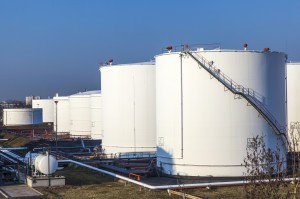 Natural gas fell for a second day on Friday, further trimming a weekly decline scored in the first half of the week, as weather data tipping the scales toward a warmer second half of July offset a bearish inventory report by the EIA.
Natural gas fell for a second day on Friday, further trimming a weekly decline scored in the first half of the week, as weather data tipping the scales toward a warmer second half of July offset a bearish inventory report by the EIA.
Natural gas for delivery in August traded 0.99% higher at $2.753 per million British thermal units at 12:46 GMT, shifting in a daily range between $2.764 and $2.723. The energy source rose 1.5% on Thursday to $2.726 per mBtu, ending a string of losses from last Friday through Wednesday.
The Energy Information Administration reported yesterday that US natural gas inventories rose by 91 billion cubic feet in the seven days ended July 3rd, exceeding projections for a jump of 86 bcf. This was also well above the five-year average inventory gain of 75 bcf, while supplies jumped by 94 bcf a year earlier.
Total gas held in US storage hubs amounted to 2.668 trillion cubic feet, expanding a surplus to the five-year average supplies of 2.623 trillion to 1.7% from 1.1% a week earlier. Stockpiles were also 32.8% above the year-ago level of 2.009 trillion.
The bearish report, however, failed to keep prices pinned down as the latest weather reports showed a bias toward warmer conditions across the east-central US in the second week of July, although patterns still remain inconclusive.
According to NatGasWeather.com, natural gas demand in the US will be high compared to normal through July 16th, with hot weather expected over the interior West, Texas, Plains and Southeast during the following seven days, while the northern half of the country will be near normal.
A strong weather system and an associated cool blast that had been recently sweeping across the central US and Great Lakes will fizzle, allowing high pressure to rapidly build. The West will cool as Pacific weather systems arrive and shift high pressure over to the central and eastern US through the weekend, resulting in highs in the mid 80s and low 90s swiftly spreading over the North and East in the coming days. Conditions over Texas, the Plains and the Southeast will become quite uncomfortable after Friday as highs establish in the mid 90s to lower 100s and will last through most of next week.
A weather system will bring slight cooling to the northern and eastern US early next week, NatGasWeather.com said, but high pressure over the southern and central regions of the country is expected to expand northward almost immediately, pushing temperatures back to very warm levels. Weather systems with showers and thunderstorms will continue to track across the Great Lakes and eastern US going into the fourth week of July, but high pressure will dominate the remainder of the country apart from the Northwestern coast where Pacific weather systems will arrive.
Next weeks inventory report is expected to mirror the one from yesterday, or slightly exceed it, as pleasant temperatures over large parts of the country last weekend through the middle of the current week kept national cooling demand at moderate levels. Early estimates call for a build of around 95 bcf during the seven days ended July 10th, well above the five-year average gain for the period of 71 bcf, while supplies added 105 bcf during the comparable period a year earlier.
Temperatures
According to AccuWeather.com, the high in New York tomorrow will be 87 degrees Fahrenheit, 3 above usual, before touching 88 degrees on July 14th. Chicago will peak at 79 degrees tomorrow, 6 below usual, but will rise to near-seasonal afterwards.
Down South, readings in Texas City will max out at 90-92 degrees through July 15th, compared to the average 90, before easing a few degrees. On the West Coast, Los Angeles will fail to exceed 78 degrees on July 11th, 8 beneath normal, followed by a slight warm-up into the upper 70s and low 80s.
Pivot points
According to Binary Tribune’s daily analysis, August natural gas futures’ central pivot point stands at $2.703. In case the contract penetrates the first resistance level at $2.761 per million British thermal units, it will encounter next resistance at $2.797. If breached, upside movement may attempt to advance to $2.855 per mBtu.
If the energy source drops below its S1 level at $2.667 per mBtu, it will next see support at $2.609. In case the second key support zone is breached, the power-station fuel’s downward movement may extend to $2.573 per mBtu.
In weekly terms, the central pivot point is at $2.814. The three key resistance levels are as follows: R1 – $2.893, R2 – $2.964, R3 – $3.043. The three key support levels are: S1 – $2.743, S2 – $2.664, S3 – $2.593.





